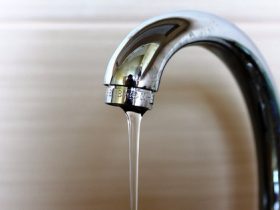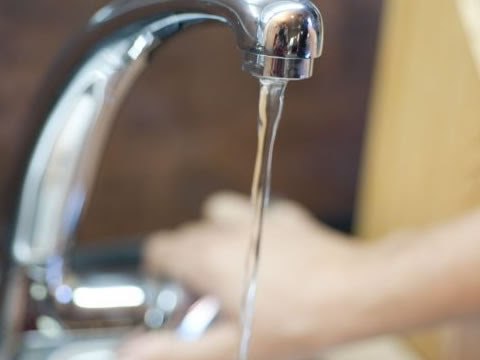They are making several great pointers on the subject of Low Water Pressure in the House? in general in the article beneath.

Low water stress in your house can be an irritating issue, affecting every little thing from bathing to washing dishes. If you're experiencing weak water circulation, there are several possible reasons and solutions to discover. In this guide, we'll discuss typical reasons for low water pressure and functional steps to attend to the concern effectively.
Intro to Low Tide Stress
Low water stress takes place when the flow of water from your taps, showers, and various other fixtures is weak than usual. This can make daily jobs more difficult and less reliable. Comprehending the root causes of low water pressure is crucial to discovering the appropriate option.
Typical Causes of Low Tide Pressure
Pipeline Obstructions
Gradually, pipes can end up being obstructed with natural resource, sediment, or debris, limiting the flow of water. This is a typical issue in older homes with galvanized steel pipes.
Corrosion
Deterioration within pipelines can result in leakages and reduced water pressure. Rust accumulation can tighten water flow, especially in maturing plumbing systems.
Faulty Stress Regulatory Authorities
Pressure regulators are accountable for maintaining consistent water stress in your house. If they malfunction, it can result in low water pressure or unequal flow throughout your home.
Community Water System Issues
Occasionally, the problem exists outside your home. Community water issues, such as main line leaks or upkeep work, can briefly reduce water pressure in your area.
Just How to Diagnose Low Water Stress
Checking Faucets and Components
Beginning by testing the water stress at different taps and fixtures throughout your home. If the concern is separated to certain locations, it may suggest localized troubles.
Checking Pipelines
Inspect visible pipelines for indications of leaks, deterioration, or obstructions. Focus on any kind of unusual noises, such as knocking or rattling pipelines, which might show concerns within the plumbing system.
Consulting with a Plumber
If you're incapable to identify the cause of low tide stress, take into consideration employing an expert plumber to conduct a complete examination. They can identify underlying issues and recommend proper remedies.
Do It Yourself Solutions to Deal With Low Tide Stress
Cleansing Aerators and Showerheads
Mineral deposits can build up in aerators and showerheads, decreasing water flow. Get rid of and cleanse these elements regularly to improve water stress.
Flushing Water Heater
Debris accumulation in the hot water heater can limit circulation and decrease effectiveness. Flushing the container regularly helps eliminate debris and keep optimum efficiency.
Examining Stress Regulator
Make sure that the stress regulatory authority is functioning correctly. Adjusting or changing the regulator can help bring back proper water pressure throughout your home.
Clearing Up Clogs in Water Lines
For small obstructions, try utilizing a plumbing serpent or chemical drainpipe cleaner to clear obstructions in pipes. Beware when utilizing chemicals and adhere to safety standards.
When to Call an Expert Plumber
If DIY efforts fail to resolve the concern or if you believe considerable plumbing problems, it's finest to seek aid from a licensed plumber. They have the knowledge and devices to deal with complicated issues safely and efficiently.
Safety Nets to Preserve Water Stress
Routine Maintenance
Schedule regular upkeep for your plumbing system to stop concerns such as deterioration, leaks, and obstructions. Dealing with minor problems early can help prevent even more considerable repair services later.
Installing a Stress Booster
Consider installing a pressure booster pump to boost water stress in areas with regularly low circulation. This can be especially helpful for multi-story homes or homes with high-demand components.
Surveillance Water Usage
Bear in mind water use routines and prevent overtaxing the plumbing system. Easy changes, such as staggering showers and laundry loads, can assist preserve appropriate water stress.
Verdict
Managing low tide stress can be aggravating, however recognizing the underlying causes and carrying out proper remedies can bring back optimum flow throughout your home. Whether it's cleansing aerators, evaluating pipes, or consulting with a plumber, taking positive actions can ensure a consistent supply of water for your day-to-day requirements.
FOUR WAYS TO FIX LOW WATER PRESSURE NOW
Turning on a shower or faucet only to find the water comes out in a sad, slow drizzle is never a good feeling. How exactly are you supposed to wash a pan or take a quick shower when it takes 10 minutes just to rinse off a little soap? The good news is that when your water pressure is bad, there's always a cause: typically one that can be easily fixed. Here are some of the most common causes of low pressure and what you can do to fix the issue:
DEBRIS AND MINERAL DEPOSIT BUILDUPS
If you notice low water pressure from just one or two of the fixtures in your house, the problem likely has to do with debris buildup. Water is full of minerals and other debris, all of which can accumulate in your pipes and on your fixtures. This can cause a blockage that affects how much water flows through. To fix this, try filling a small plastic bag with white vinegar, and use a rubber band to hang it around your showerhead or faucet. Let the head of the fixture soak for a few hours, and the vinegar should loosen the deposits.
WATER LEAKS
Leaks are another common cause of low water pressure. If water is flowing out of your plumbing through a hole or crack before it can reach your fixture, the pressure coming out of the faucet or showerhead will be lower. A plumbing professional is your best bet for finding and repairing a leak in your water supply pipes.
Leaks are another common cause of low water pressure. If water is flowing out of your plumbing through a hole or crack before it can reach your fixture, the pressure coming out of the faucet or showerhead will be lower. A plumbing professional is your best bet for finding and repairing a leak in your water supply pipes.
A VALVE ISSUE
If you have low water pressure throughout your home, check your main shut-off valve to make sure it's completely open. You may also want to see if there's a pressure-reducing valve installed. If there is, have a plumber help you adjust the settings to get the pressure you're looking for.
OTHERS USING WATER
Believe it or not, your low water pressure could be caused by your neighbors. If you notice low pressure at certain times of day, it may be because you and the people living next to you have similar schedules - when everyone is showering at the same time, the pressure will be lower in every home. Low pressure throughout the neighborhood may also be caused by an issue with your municipal water supply. If that's the case, call the supplier to see if they're working on the issue.
https://www.rotorooter.com/blog/water-leaking/low-water-pressure-fixes/

We are very drawn to Low Water Pressure in the House? and I'm hoping you enjoyed the blog post. Loved our piece? Please quickly share it. Help others find it. Bless you for your time. Return soon.
Click Here
Comments on “Best Techniques for Dealing with Low Water Pressure in Your Home”